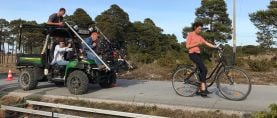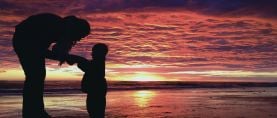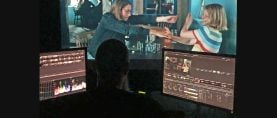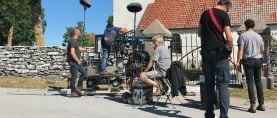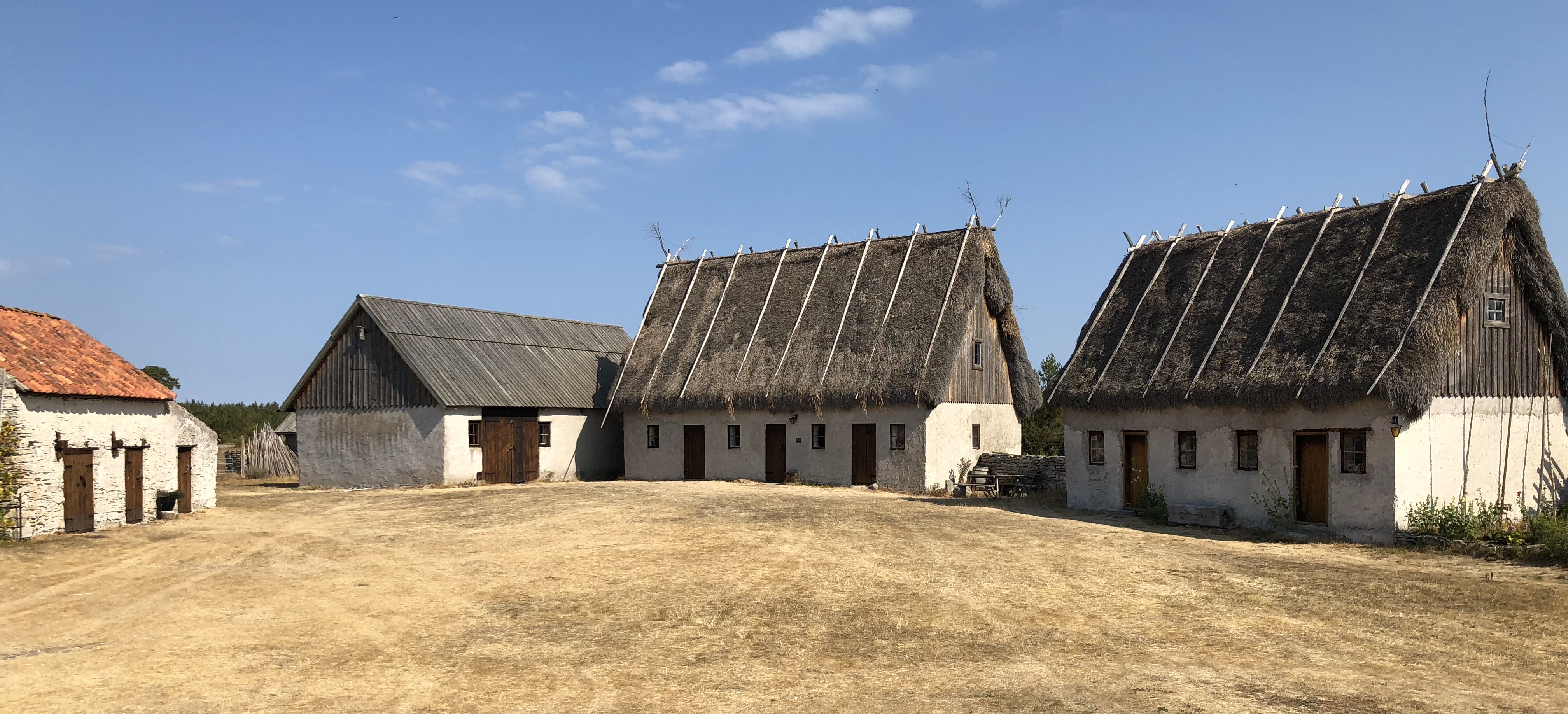
Bergman Island Journal — Part III
Denis Lenoir, ASC, AFC, ASK’s updates on the making of this unique project set on Fårö, the Swedish island where Ingmar Bergman shot four features, lived, died and is buried.
The cinematographer’s updates on the making of this unique project set on Fårö, the Swedish island where Ingmar Bergman shot four features, lived, died and is buried.
Production images courtesy of the author
Editor’s note: This production diary will unfold over the following days in multiple parts (starting here), while a more formal interview with the cinematographer can be found here.
On Monday, July 16, I went back home, Los Angeles, stayed there for a big fat week, and then flew back to Fårö on the 25th, landing on the 26th.
Friday, July 27
I have left my cabin in the woods for a more suburban-looking house, a much less charming environment but way spacier and comfortable. At 10:00 a.m. and as directed I am in the parking lot, ready to go and do more scouts, Mia is the first one to join me and immediately tells me she is thinking of switching from 1.85 to 2.40 aspect ratio and asks if it is not too late and if there are technical or money reasons not to. I reassure her, no it is not too late and it will not cost more. The news makes me very happy as, at the reading of the script almost two years ago, I had offered her to film in this ratio. At the time she had preferred the more classical 1.85, sharing with me that filming American actors speaking English was already “Hollywood” enough for her taste without needing to add the so-American-looking wide format. Curiously enough, it is because the second unit shots we had made a few weeks ago were, by mistake, not cropped by the lab and because she had watched them wide that Mia acknowledged this frame suited better the island. Nothing could make me happier. I grab my phone and contact Tobias so when on Monday he starts testing the camera he will already know.
Speaking of lab mistakes, we are now with a Belgian lab, Studio L’Équipe. The Swedish lab had made many mistakes, starting by developing and scanning without any prior exchange with me in spite of the email I had sent to open a line of communication. Then, when I learned they had processed our footage, I discovered it was only visible by downloading a gigantic file, something I couldn’t do with the poor internet connection I had in my cabin. So I asked them to transfer them on some kind of hard drive, several mails were subsequently exchanged discussing the compression used and finally I discovered them on Vimeo, but in log form. Extremely surprised and before complaining, I thought: What were they imagining I could make of log images? How would I judge my keylight tests? Was, in their mind, the director supposed to watch her dailies in log? I asked them if it was in log and four days (four days!) later got the confirmation with a :) emoji. Ultimately, we get the dailies with some kind of LUT applied and I was able to see them on Vimeo, only to discover there was some technical problems, some due to our own work, but also some white marks, which to me looked like dirt on the neg after development and before scanning. I asked about it and received a lesson on dirt in the camera gate, which we also had, but nothing on the dirty scan. At that point, I begged the production to switch to another lab, successfully.
We went back to some locations I already knew, but Mia has changed her mind on the way to shoot them. One I actually hadn’t seen with Mia, and as all is now burnt by the sun (which seems to have been shining almost constantly since May) we are now trying to avoid filming huge patches of yellow lawn or the trees when they are covered with brown dead leaves. I mention the possibility to change the color in post, how — to my knowledge — it was done for the first time on the leaves in O Brother Where Art Thou?, and how, being a friend of Dan Schmit the owner of Engine Room, a Hollywood VFX company, I can easily ask him about it.
A few hours later, Dan confirms to me that a lot could probably be made without rotoscoping the actors and that, as usual, it all depends on the length of the shot(s).
I remember I have to warn Peter Bernaers, the final colorist I booked, as he is from Belgium and has already successfully worked with Mia and I on Eden, that he is now free to look for work at the beginning of next year, we must shoot first the second part of the film, in the Spring or Summer of 2019.
Week minus 1
Monday, July 30
Small meeting at Mia’s house, 50 yards from mine, only her, Marie and me. We go through the first two weeks schedule, day-by-day, shot-by-shot, rearranging the order we will shoot them, as to be more efficient. Not very exciting but extremely useful. As much I am not by taste a prep guy, finding it so boring to spend days in a production office while the director is busy somewhere else dealing with the thousand things he has to communicate about, I must confess that on BI, having already seen the locations three times or more, having already learned about the shots while on these locations and possibly inflected them, I feel ready like never before. Even though my cheat sheets are not finished yet.
Mia also shows me some terrible smart phone photos of our two actresses — taken under a zenithal-fluorescent light, with no makeup — where they wear different possible outfits. It is while looking at them that she had noticed how a low angle looking up on Vicky is unflattering. She had warned me, she was right, something to avoid for sure, but not a big surprise, low angles are, indeed, rarely flattering!
I do a 10:00 p.m. short scout with Mia and Marie, looking for where two night scenes — one inside a bus and the other on a bicycle — will take place. I will try to get some brighter sky behind the bicycle shot, and for the other one, add some light from the roof of the bus, on both sides, which should light a little of the sides of the road behind the characters inside.
Tuesday, July 31
New work session with Mia and Marie, this time we’re able to go through the whole schedule. Deciding together how much time to give to each scene, and when during the day is best to film it. Many dusk scenes, when dusk — from sunset to “too late to film unless you call it night and start lighting” — is not much more than 45 minutes. Sun Seeker is opened and my phone on the table, and day-by-day we place dusk time and then build the rest of each day before and after it.
In the afternoon, I go to see two blue cars which will play — knowing already that Mia has, rightfully, rejected one for them being too close in color. We will keep the blue Volvo station wagon, a very pleasant hue, wonderfully matte, too. It also has very pleasing violet seats. On paper, we select a dark green Honda to replace a dark blue Volkswagen.
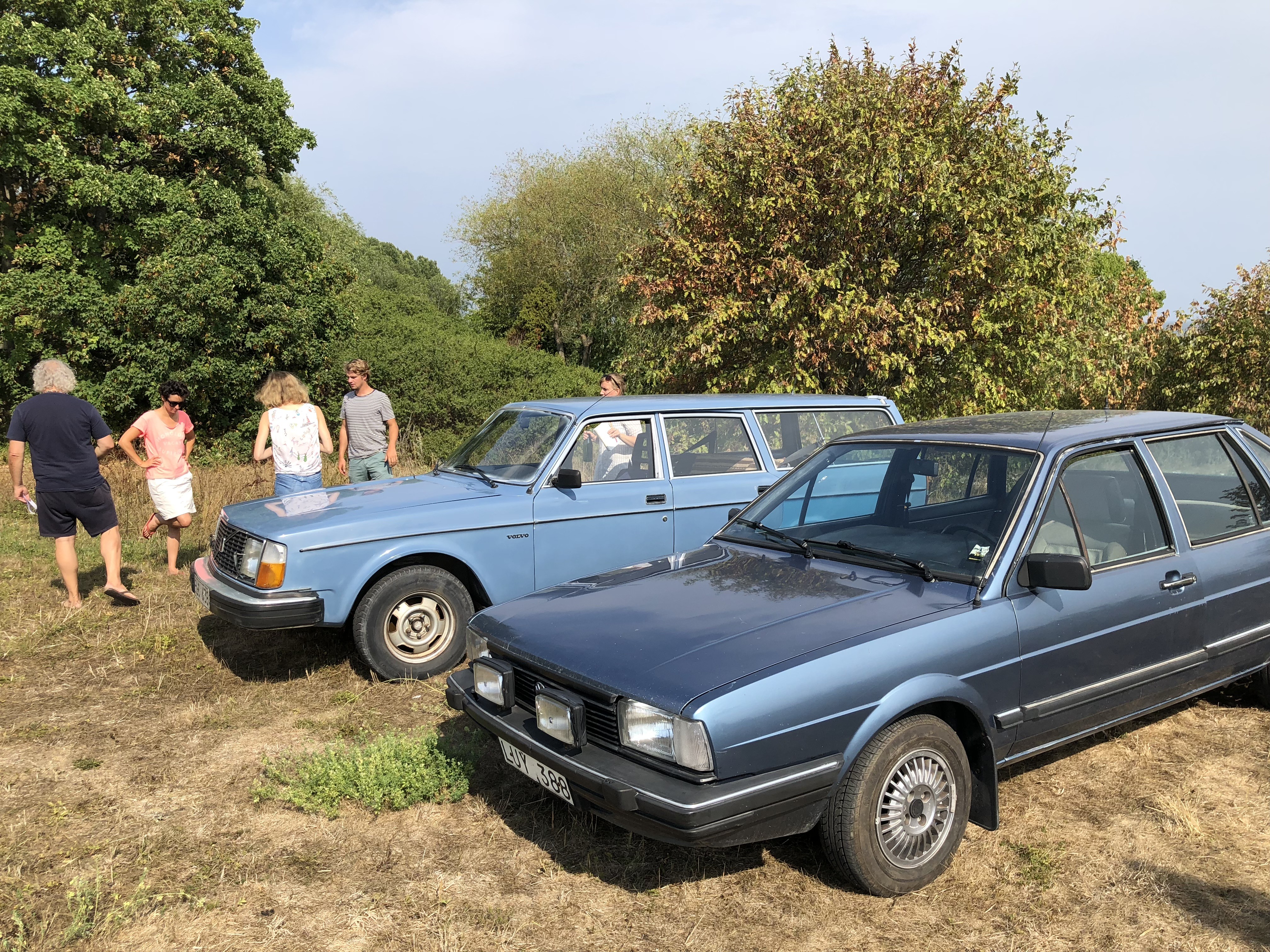
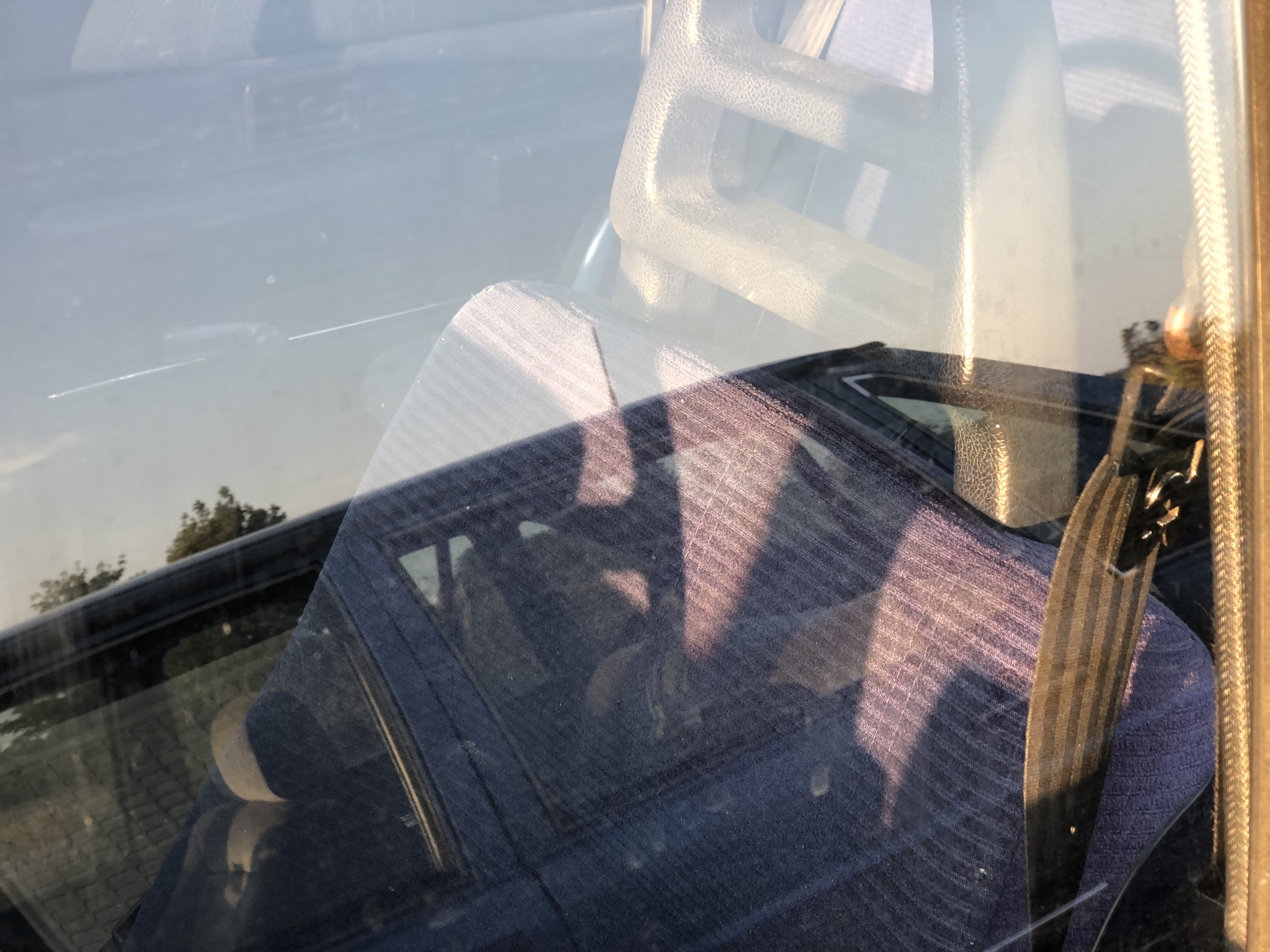
Wednesday, August 1
Mia, Marie and I walk to the little sauna by the beach. A dawn scene will take place there, followed by a swim in the nearby sea. We will film it in reverse order, playing dusk for dawn. I have already asked Tobias to do some research on the amount of sauna heat the camera and the film stock can stand, and the answer seems to be that we will be out of the sauna before it can compromise our work. I also plan to bring a towel to put between the camera and my head so I don’t get burned by the hot metal.
We then look at the many shots and tracks we will do at Südersand, a complex of cabins, houses, and camping ground on Fårö where Swedes love to spend their summer vacation. The cabins are fun, there is a kind of Smurf Village feeling to this neighborhood.
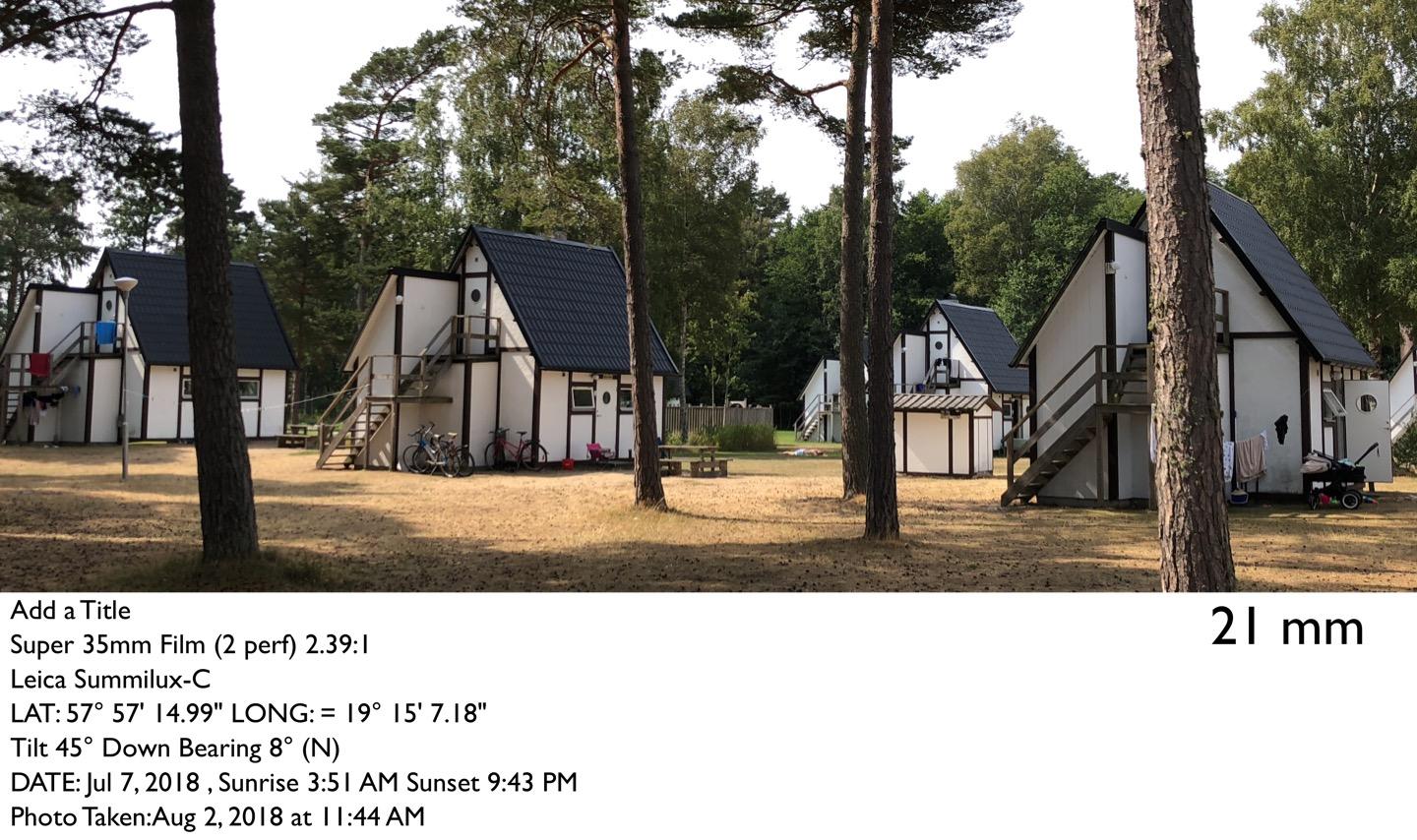
Thursday, August 2
We spend the morning inside one of the Smurf houses, the one that Clémentine, our continuity person — who I have known since 2005 when we were both working on Assayas’s Carlos in Lebanon — lives with her family for now. We go through our shots.
Meeting at the art department in the afternoon, where I am not really needed, but show up as I have been invited — and, to be honest, also have nothing else to do. Mia checks the flowers that will be put around Ingmar Bergman’s grave. Are we going to use a box to put the rings in at the wedding? No. What will be thrown on the newlyweds when exiting the church, rice? No. Soap bubbles? No. Paper flower petals? Yes, but Mikael says it is not very Swedish. In some kind of aparté, Robin, the prop master, asks me if I prefer yellow bulbs or whitish LEDs for the bicycles. (The incandescent ones.) And if I prefer a battery or small generator to feed them. (Small generator, so they vary a bit, at least when starting or stopping). Mia asked the people present in the office for some volunteers to go with her at the end of the day at the cemetery and water Ingmar Bergman’s grave — there has been so little rain since May that everything is turning brown, the grass looks like a doormat.
Friday, August 3
Idle day. I go to the art department office to get from Eva the tick spray bottles I had left in the cabin she is now living in.
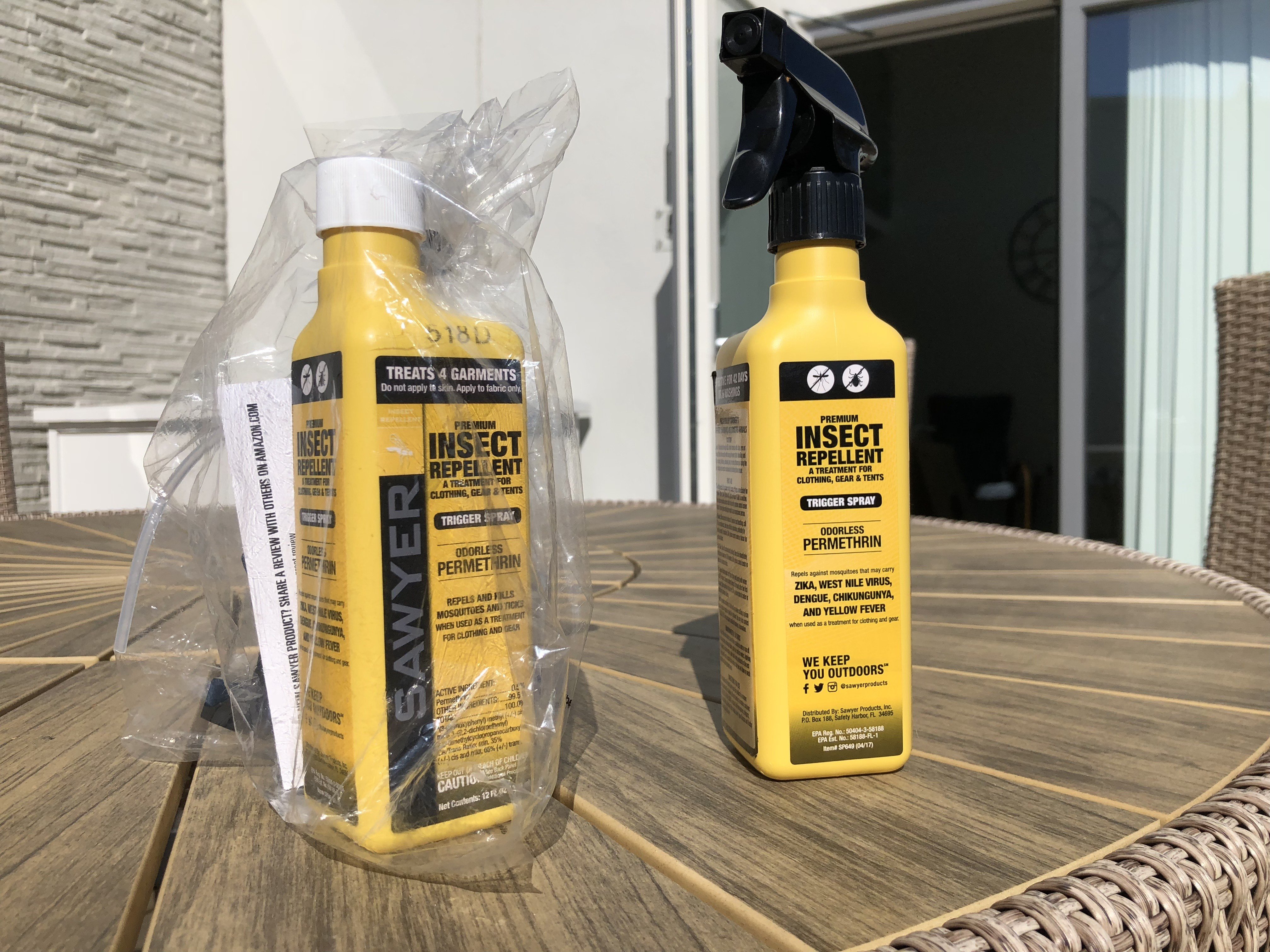
The house next door is used this evening for some wardrobe fitting and hair cutting, an opportunity for me to say hello to actress Vicky Krieps, who just arrived. I worked with her in Luxemburg on Avant l’hiver four years ago — she had a very small part, just a day or two. I reminded her and she remembered it was very cold when we filmed her!
Dinner by myself with a book at L’Albatros, one of the two good restaurants on the island. Both will remain open for just a little more than two months, and we’re all freaking out at the idea they will close several weeks before we’re done filming! Mia, Vicky and producer Charles Gillibert show up for dinner, and when I am done I join their table for 10 minutes or so. It’s always a difficult balance for me between being social enough and not imposing myself…
To be continued in Part IV. Catch up with Part II here.
A more formal interview with the cinematographer can be found here.

